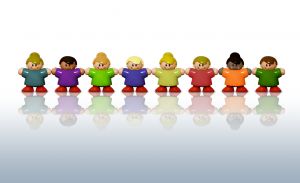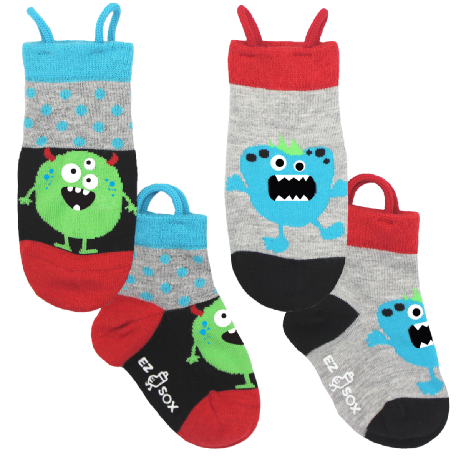Initiating friendships with kids who have special needs is not a natural ability in most children. It’s a skill most need to be taught. Guest blogger Gillian Marchenko believes parents are best able to teach children about how how make friends with their kids who have special needs. In today’s post she shares the 5 Bes, which can help kids cultivate genuine friendships.
Friendship’s 5 Bes for Befriending Kids with Special Needs
By Gillian Marchenko
How can we help our kids cultivate genuine friendship with children with special needs? By using the 5 Bes, a helpful guide to encourage interaction between typically developing kids and children with special needs. You can use this list is meant to be used to talk through special needs with your kids.
The Five Friendship Bes:
- Be Smart: Let’ talk about your friend and learn about his special needs. Every person is different. Accept your friend for who he is, differences and all. If you have questions about him. Ask. Ask your teacher or your friend’s mom or dad if there is something you don’t understand.
- Be Patient: Some of her behaviors may bother you. Your friend is not trying to annoy you. She might need more time to answer your questions or to help you finish an activity. Kids with special needs sometimes think differently (as we all do!). If your friend does something that offends you calmly explain to her what bothered you, or talk to an adult about the behavior.
- Be Inclusive: Inclusive is a big word. It just means to invite your friend to join in activities with you. Or offer to teach your friend how to play. Show him the rules of the game. Clear directions help everyone understand things better. Try not to be hurt if he says no.
- Be Sensitive: Join your friend in the activities she enjoys. Talk about topics that interest her. Maybe your friend really likes trains. Even though it can get old for you, it makes her feel special when you listen and appreciate the things she loves. Praise your friend for the things she is interested in.
- Be Brave: Children with special needs are often made fun of or bullied. Be brave and defend your friend. If your friend is being teased or bullied, tell the teacher or another adult right away. It is never alright to bully another child. Sometimes kids with special needs have a harder time understanding sarcasm and jokes. Don’t tease your friend. Don’t allow others to tease him either.
A Starting Place for Friendships
Of course, this is just a starting point, an opportunity to jump in and talk to our kids about loving and befriending all kids around us in school, church, and on the playground. There could probably be a list of the 100 Bes, but this will get things started with your discussion.How do you talk to your children about special needs?
Gillan Marchenko
www.gillianmarchenko.com
How Do You Encourage Friendships with Kids Who Have Special Needs?
I love the 5 Friendship Bes. How about you? How do you encourage your typical kids and other children to become friends with your child with special needs? What would you add to Gillian’s list? Like Gillian said, the list of Friendship Bes could reach 100. How about we give it a try in the comment box? And when you have the chance, surf over to Gillian’s website, www.gillianmarchenko.com, to find out more about her adventures in parenting.
Finallly, thanks to all who entered to win a copy of the Surviving to Thriving Special Needs Ministry DVD reviewed at Different Dream on August 16. The winner is Lea Duckstad who entered because her growing church is starting a special needs ministry called Embrace. Congratulations, Lea, and best wishes as your church begins this new ministry!
Do you like what you see at DifferentDream.com? You can receive more great content by subscribing to the quarterly Different Dream newsletter and signing up for the daily RSS feed delivered to your email inbox. You can sign up for the first in the pop up box and the second at the bottom of this page.




Lea,
Come back and tell us how the launch of your program goes in November.
Jolene
Lea,
Come back and tell us how the launch of your program goes in November.
Jolene
Wow! God is good! Our church will love this DVD as we start our new ministry. We hope to launch our ministry full swing in November (along with a brand new location and building). I was just informed by my Pastor that we even have a space for Embrace Ministry in the new building! Praying for God’s guidance as we move forward. So blessed to have been chosen for this DVD and this ministry! 🙂 Thanks to Amy Lee Fenton for making this information available to us!
Wow! God is good! Our church will love this DVD as we start our new ministry. We hope to launch our ministry full swing in November (along with a brand new location and building). I was just informed by my Pastor that we even have a space for Embrace Ministry in the new building! Praying for God’s guidance as we move forward. So blessed to have been chosen for this DVD and this ministry! 🙂 Thanks to Amy Lee Fenton for making this information available to us!
Awesome! Thanks Jolene for posting about the five Bes.
Also, my church is using the Surviving to Thriving training for our teachers … it’s wonderful!
Awesome! Thanks Jolene for posting about the five Bes.
Also, my church is using the Surviving to Thriving training for our teachers … it’s wonderful!